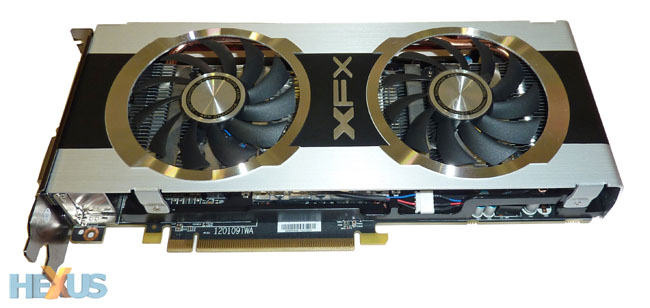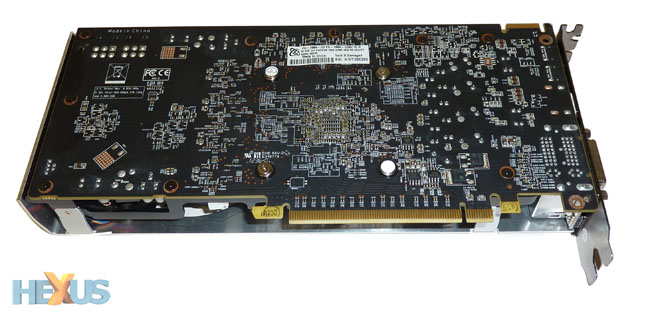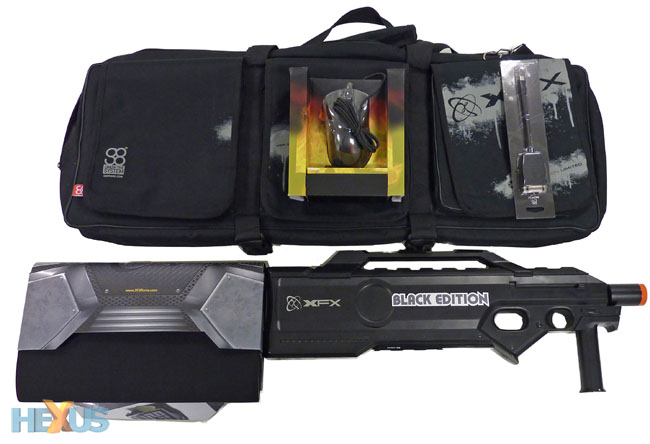Something different
It's all gone a bit quiet on the graphics-card front. The grapevine reports AMD and NVIDIA are both holding fire until early 2013 before launching next-generation GPUs, so enthusiasts looking for a festive upgrade need to keep an eye on Radeon 7000 and GeForce 600 series cards. Assuming the PC is up to scratch, spending around £150 will buy you a GPU good enough to game at a 1,920x1,080 resolution with decent image-quality settings. With a raft a new games already out for the festive period, the two main GPU protagonists have taken competition to a new level by providing a bunch of high-quality games with each purchase, so now is a good a time as any to look for that mid-range upgrade.
Championing the AMD Radeon 7000 cause is XFX. It's launching an interesting bundle based on the Radeon HD 7850 Black Edition GPU. Let's take a look.
Focussing on the card first, XFX employs a familiar dual-fan technology that falls under the Double Dissipation banner. This top-line cooling solution is used on the best cards on a particular family and usually goes hand-in-hand with factory-based overclocking of the underlying GPU and memory frequencies. Accordingly, XFX boosts this HD 7850 2GB card from a default 860MHz core to 975MHz, while memory sees a modest hike from an effective 4,800MHz to 5,000MHz. There's no auto-overclocking on this model, mind, as the PowerTune with Boost technology is reserved for Radeon HD 7890 and above.
The card's twin 80mm fans don't make contact with the large aluminium heatsink underneath, leading to a floating look that's enhanced by the heatsink not being fully enclosed. This means that the majority of hot air is expelled back into the chassis rather than out the rear of the card.
In an effort to keep noise levels in check, both fans make use of linear speed ramping and should run suitably quiet at all times. The card, then, looks good, it's overclocked, the dual fans should have no problem cooling the underlying 28nm GPU, and it ought to be quiet, too.
Power is fed through a couple of six-pin PCIe connectors, and we'd recommend a 400W-plus PSU with plenty of amperage on the 12V line. As you may know, a single CrossFireX connector, located on the right-hand side, enables a second card to be hooked up for two-board CrossFireX configurations.
The sheer clout of modern graphics cards means they can drive multiple screens with decent eye candy. AMD's three-display output, dubbed Eyefinity, isn't as straightforward as NVIDIA's GeForce 600 series; you need to use at least one mini-DisplayPort connector in conjunction with HDMI and DVI. XFX, however, does the right thing and bundles in the necessary Eyefinity-forming adapter, which we'll come to in our discourse on the rather extravagant bundle.
Outfitted with 2GB of GDDR5 memory on the topside and sporting a 9.5in PCB, which is a common form factor for XFX's entire line-up of Radeon 7800 series of cards, you should have no problem in installing it into the majority of chassis. It's a dual-slot card, clearly, and it's highly unlikely any manufacturer will be able to tame the 125W in a single-slot form factor.
XFX has teamed up with online retailer Scan to make the card available as part of a limited-edition package. The card is contained within the plastic gun on the bottom-right, and XFX includes a Warpad mousepad, a Trust gaming mouse, an active DP-to-DVI adapter, and, last but not least, a three-pocketed LAN bag in which to house all the goodies.
Extraneous to XFX but also worth mentioning as part of the package, purchasers will be able to avail themselves of a free copies of the excellent Far Cry 3, Hitman Absolution, Sleeping Dogs, while also receiving a 20 per cent discount on Medal of Honor: Warfighter. The bundle is better than offered by AMD through its HD 7800-series 'Never Settle' initiative, which only includes Far Cry 3 and the discount on Warfighter.
This tidy lot - card, package, and AAA games - will set you back around £165, which is some £30 more than the cheapest HD 7850 2GB cards available. We believe that XFX offers decent value for money, all things considered, and it pits the card up against the GeForce GTX 660 (OC) from NVIDIA's slew of partners.














